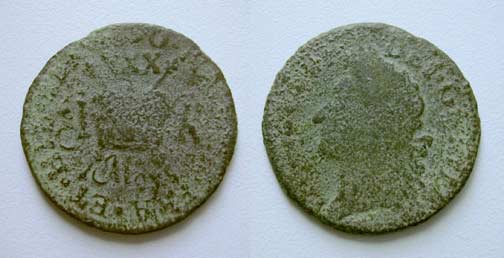William I |
Edward II |
||
William II |
Henry VIII |
||
Henry I |
Edward VI |
Anne |
|
Henry IV |
George I |
||
George II |
|||
Richard I |
|||
Edward IV |
|||
Edward V |
Cromwell |
William IV |
|
Richard III |
|||
James 2nd, 1685 - 1688

| 'Gun Money' half crown Within a few months of his succession he had to quell a Protestant rebellion led by his nephew, James Duke of Monmouth - who was captured and beheaded. The infamous Judge Jeffries presided over the infamous 'Bloody Assizes' trials which followed. After only three years, Parliament invited James's daughter Mary - a Protestant - to take the throne jointly with her husband, William of Orange. James fled London but was immediately caught, and William had to intervene to ensure that he escaped safely to France. From there he went to Ireland and began mustering an army with which to win back his throne, and had cannons and church bells melted down and minted into coins - hence 'gun money' - in order to pay his troops. Each coin was stamped with the month of issue as well as the year, the idea being that when James was once again King he would redeem these base-metal issues with silver coinage in the order in which they were issued. Unfortunately, his army ended up being defeated by William, and gun-money eventually came to be accepted for trade in England, though for only a fraction of it's intended value: this coin, intended to be worth a half-crown, was only valued at three English farthings. Apparently the Spanish soldiers in James's army weren't too sure of his chances of success, and insisted on being paid in silver coin instead. The intended value of the coin
is shown by the three 'X's on the reverse, therefore 30 pence - or two
shillings and sixpence. Beneath the crown you can see the word 'May',
the month of issue, and right at the top the last two digits of the
year of issue, (16)90. |
Home |
Collection |
Cartoons |
Stories |